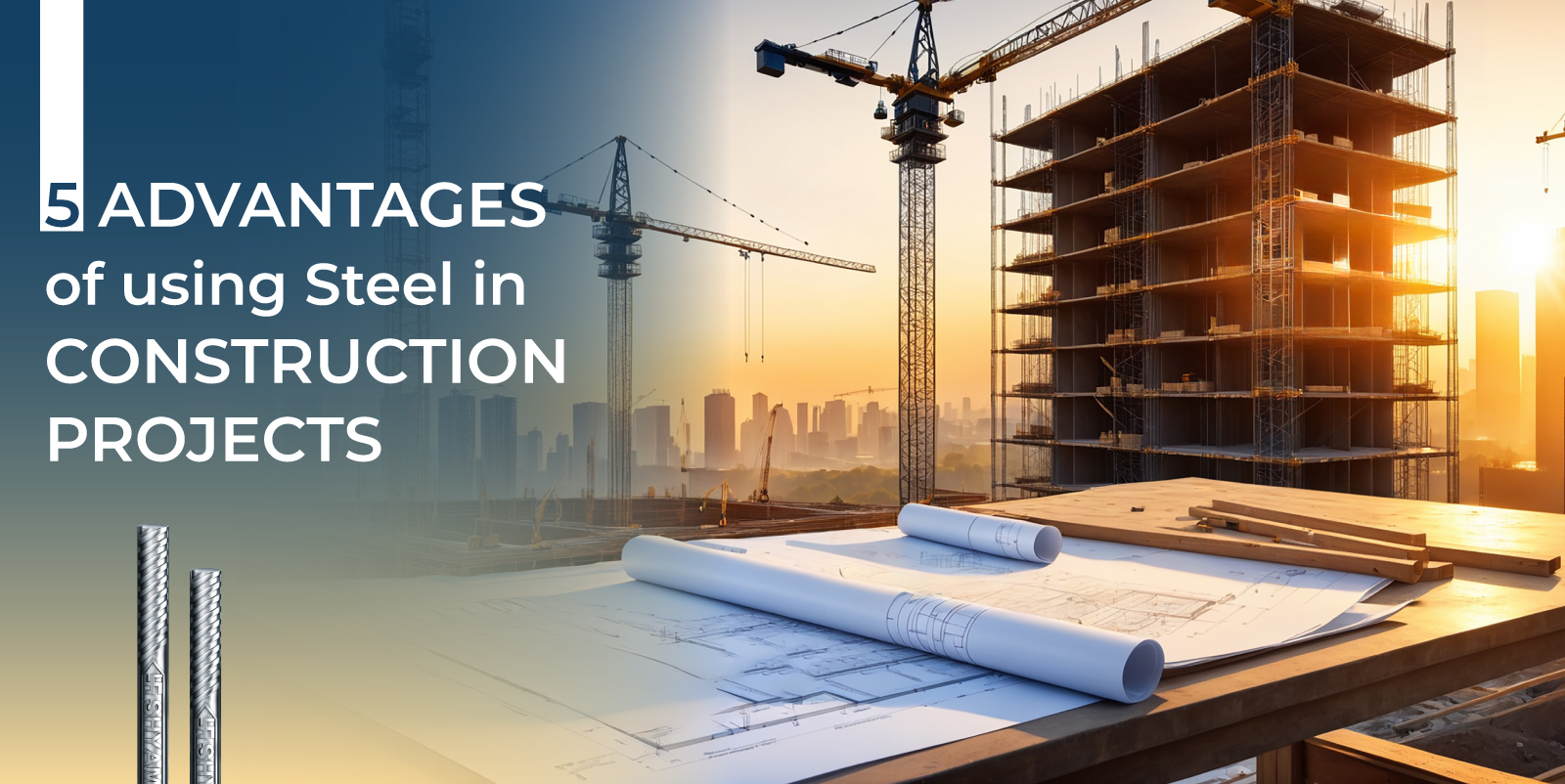5 Advantages of Using Steel in Construction Projects
Steel is becoming a vital component of building. Its remarkable qualities and adaptability are the reason behind this. When building structures or skyscrapers, engineers and architects prefer to use steel. The five benefits of employing steel in construction projects will be discussed in this blog, along with how architects and engineers can derive benefits from them.
Strength and Durability
Incredible strength of steel is one of its prominent advantages. It boasts a high tensile strength. Steel can withstand significant stress without deforming or bending. This property of steel makes it suitable for the high-rise buildings, long span bridges and other structures that needs to bear heavy loads and resist challenging environmental conditions.
Besides its tensile strength, steel also has higher durability. Unlike wood, which can rot, or concrete, which is prone to breaking, steel can maintain its shape for a long time without breaking. Modern treatments like weathering or galvanization can further enhance its corrosion-resistant properties. This ensures the longevity of the structure even in harsh climates. Due to this, steel structures require less maintenance. It also lessens further expenses.
Versatility and Flexibility
Steel is a highly versatile material. It can adapt itself to a wide range of design. Architects appreciate steel for construction projects due to its flexibility, which allows them to create aesthetically pleasing structures. Steel is made for everything, whether it is intricate curved designs or open spaces with critical interiors.
The flexibility of steel extends beyond its design. At the time of construction, steel can be pre-fabricated off site. It ensures precision and reduces on site work. This adaptability of steel also makes them suitable for renovations and modifications. Steel structures can be easily reinforced without compromising the integrity of the buildings.
Sustainability
Sustainability has become a crucial factor in construction. And steel scores highly in this segment. Unlike other building materials, steel is 100% recyclable. They do not lose their properties. Old steel components can be quickly melted down and reused to create new products. It conserves natural resources and minimizes waste.
Additionally, advancements in steel production have majorly reduced steel’s carbon footprint. Modern procedures generate fewer emissions and consume less energy compared to traditional methods. Steel structures are also energy efficient due to their ability to integrate with insulation and renewable resources like solar panels.
Speed of Construction
Time is a crucial factor in any construction project. Steel offers significant advantages in this regard. The majority of steel components are produced off-site in regulated environments, guaranteeing accuracy and quality. Steel parts can be swiftly put together after they are delivered to the construction site. When compared to conventional methods, steel also shortens construction schedules.
The speed of construction not just saves time but also reduces labor expenses. It also minimizes disruptions in the surrounding regions. The predictable performance of steel also reduces the likelihood of delays caused due to unforeseen consequences. Engineers and architects can rely on the consistent properties of steel. It ensures smooth progress by meeting project’s specifications.
Cost-effectiveness
Although the initial expenses of steel might be high, they are cost-effective in the long run. The durability and low maintenance requirements of steel significantly reduce its lifetime expenses. Structures built with steel also need fewer repairs and less frequent replacements. They are further translated to substantial savings over a long time.
Steel’s ability to span over longer distances without needing any support also lessens material and labor expenses. This feature is beneficial for constructing large residential buildings, warehouses, and stadiums. Also, the recyclability property of steel ensures that at the end of its lifecycle, it retains its value. It also offers potential return to the owners.
Conclusion
Steel’s strength, versatility, speed of construction, and cost-effectiveness make it an outstanding choice. They are used for modern construction projects. Its ability to meet the demands of innovative architectural projects while being popular ensures its longevity. Steel’s influence on how city skylines and residential and commercial structures are shaped will only increase with technological improvements and quality construction. Steel is still the preferred material for any project requiring performance, stability, adaptability, and durability. It keeps on delivering unmatched advantages and precision in every aspect of construction.

